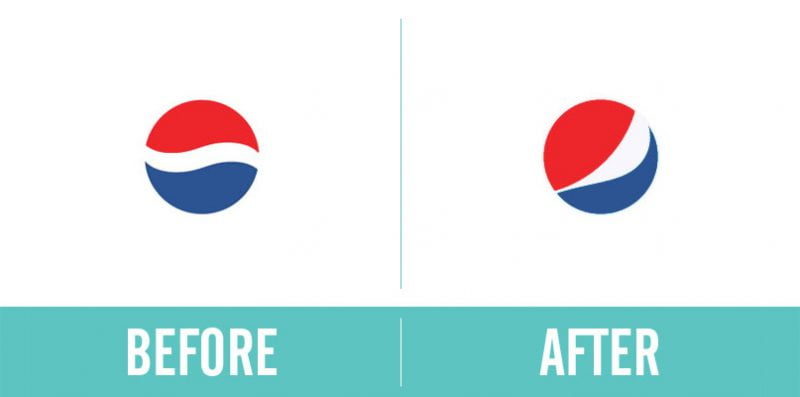
Rebranding – Rebranding – is one of the most difficult marketing strategies for businesses to successfully implement. A talented marketer named Hilton Barbour commented: “Businesses rebrand when the value that the brand brings to the business shows signs of slowing down; or the strategy used when the business goes in a new direction; Or simply, these are just necessary steps for businesses in the post-M&A era.”
In all cases, this strategy is applied for the purpose of radically changing brand awareness , directly impacting the objects related to the business, from customers, suppliers, to potential future customers.
But change always comes with risks, especially in rebranding strategy. Rebranding means you trade the values that have been established in the brand (and imprint in the hearts of customers), into something completely new, unknown to anyone. Obviously, this strategy will cause a lot of difficulties for brand managers who are lacking and weak in experience.
The key to success in rebranding strategy is: Always associate rebranding strategies with the overall business strategy of the business. They must be consistent with the initial goals of the business, not out of step, even a small strategy. You need to take the time to “grasp the problem as a whole, consult many different points of view, and make a definitive decision”.

As a business administrator, you are the one leading the business, catching and adapting to all changes arising from the difficult rebranding campaign. Rebranding is about constant involvement in the process to make appropriate adjustments, not a rigid, inflexible principle.
In order to help you have a better view of the rebranding process – one of the most difficult and macro marketing strategies for any senior manager – we provide you with 4 things to avoid when doing it. rebranding, to make your work more efficient and easier.
>>> Refer to 3 Case studies about rebrand: Uber , Airbnb , Google Ads
#1 Rebranding will change the core values of the brand
A rebranding strategy will change some aspects of your business, but that doesn’t mean you have to destroy everything that is intrinsic to your brand. In many cases, restructuring is about overcoming the weaknesses that the brand is experiencing, and is just a supplement and solution to the problems that need to be fixed.
Here, managers need to know how to inherit the good values that have made the brand, combined with the necessary modifications so that the business can develop and go further.

The example of Pitney Bowes with a transformation in a 95-year-old company specializing in manufacturing imprints (in the postal industry) can show us: Rebranding can be rooted in the core value of a company. strong brands in the past. CMO Bill Borelle is proud to say about the company’s rebranding strategy as follows: “Our new brand is the successor of traditional commerce with the modern values of digital era commerce.
Past legacies make it easy for our brand to penetrate seemingly new markets for the company, such as: smart positioning; customer information management; global ecommerce; mailing and shipping. We are extremely proud of our achievements and the future of the business.”
>>> 10 factors to know for successful Rebrand brand
#2 Loyal customers hate change
For a change in the business, the customer’s reaction can range from anger, to joy, to acceptance, depending on the effectiveness of the designs that the business has applied. Let’s look at the two opposing stories of Pepsi and McDonalds as an example.
While Pepsi’s $1.2 billion rebranding was viewed as a failure and wastefulness (of which $1 billion was spent on changing the company logo alone), McDonald’s change was seen as a major change. spectacular escape, completely changing the negative view of consumers about this brand.
The reason for Pepsi’s failure lies in the changes of the brand itself. Customers think Pepsi’s rebuild is not much. The changes are not too different from Pepsi’s old brand identity . People asked the beverage giant: Has Pepsi really rebranded its brand? Or just a few minor, unnecessary modifications?

Meanwhile, before the restructuring, McDonalds was famous for providing consumers with cheap fast food and severely lacking nutritional balance. The revolution of the brand lies in the efforts of McDonalds to change their menu to healthier dishes. Moreover, the company makes a strong impression on loyal customers by the design and interior decoration inside the store chain is full of youthful and novelty (like the way Starbucks makes its mark through the chain’s coffee shops). Surname).
With bold steps that are extremely smart, McDonalds has completely changed the perception of consumers, scoring points in the eyes of loyal customers, without forgetting to attract new potential customers who have can increase the company’s revenue in the future.

Thus, the lesson to be learned here is: Businesses when doing rebranding must know what their customers want and receive. Surprise them with positive changes that address their needs, rather than vague, aimless changes that can confuse them.
>>> 4 lessons learned from the failure of big brands
#3 Rebranding must be associated with a change in image
Do not attribute the rebranding strategy to changes in visual images, completely changing the brand identity. Silent changes can be so powerful that we often don’t notice them easily.
For example, UPS – FedEx’s arch-rival has made a revolution to gain a competitive advantage for himself. In the late 1990s, UPS quickly replaced the slogan with the famous tagline “Moving at the Speed of Business”. Offers overnight delivery. Although UPS has changed the brand identity in a few details, it is not much different from what customers already know about the brand.

Obviously, not every successful rebranding campaign requires businesses to cleanly change their brand identity.
#4: Rebranding is simply a change in image
Visual issues (related to brand identity) are part of a business’ branding, but it’s not everything. That’s why Uber’s brand overhaul in 2016 was a disaster. Instead of solving controversial issues surrounding the company’s respected CEO, or implementing strategic restructuring, the company only focused on changing the look of the brand, the surface.

Besides, they also do not have any explanation to explain the changes taking place in the business. This leaves customers extremely confused with the changes, and continues to be stuck with scandals that Uber has not fully resolved.
The key to success in rebranding is consistency with the overall strategy of change.
Always keep in mind that the brand management process is a never-ending business. Your rebranding must be forward-looking and highly effective. And don’t forget, every change must meet exactly what customers need and expect from the brand.
Hope you have gained useful knowledge about the rebranding process, and avoid the mistakes of rebranding that the article has mentioned. Wish you success in your journey to build and develop your brand in the future.




